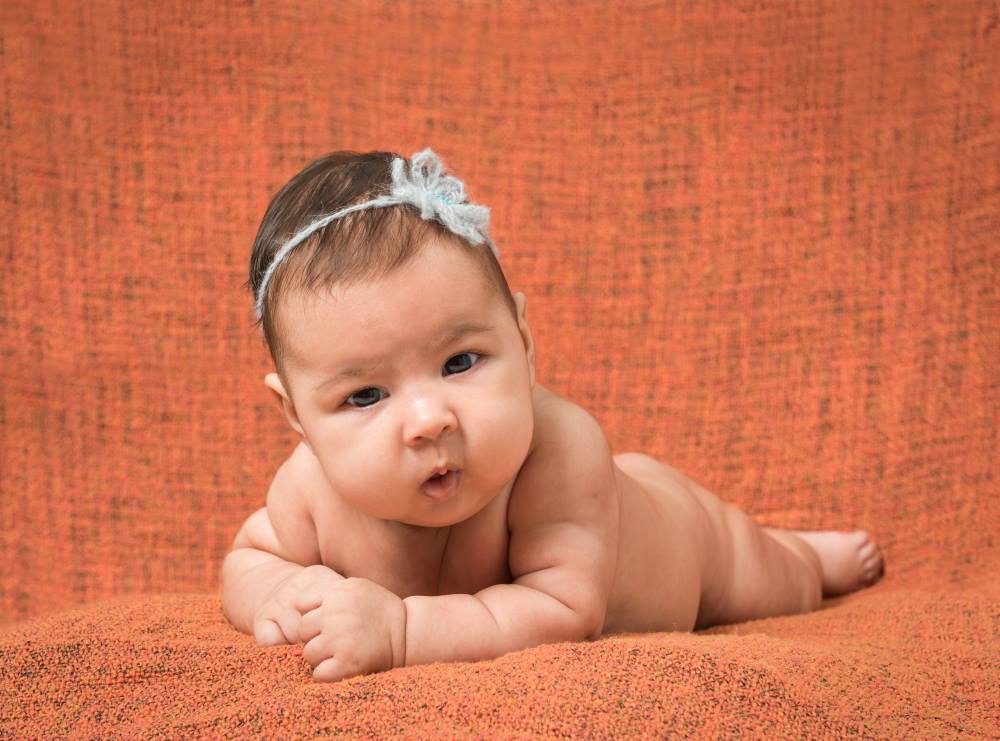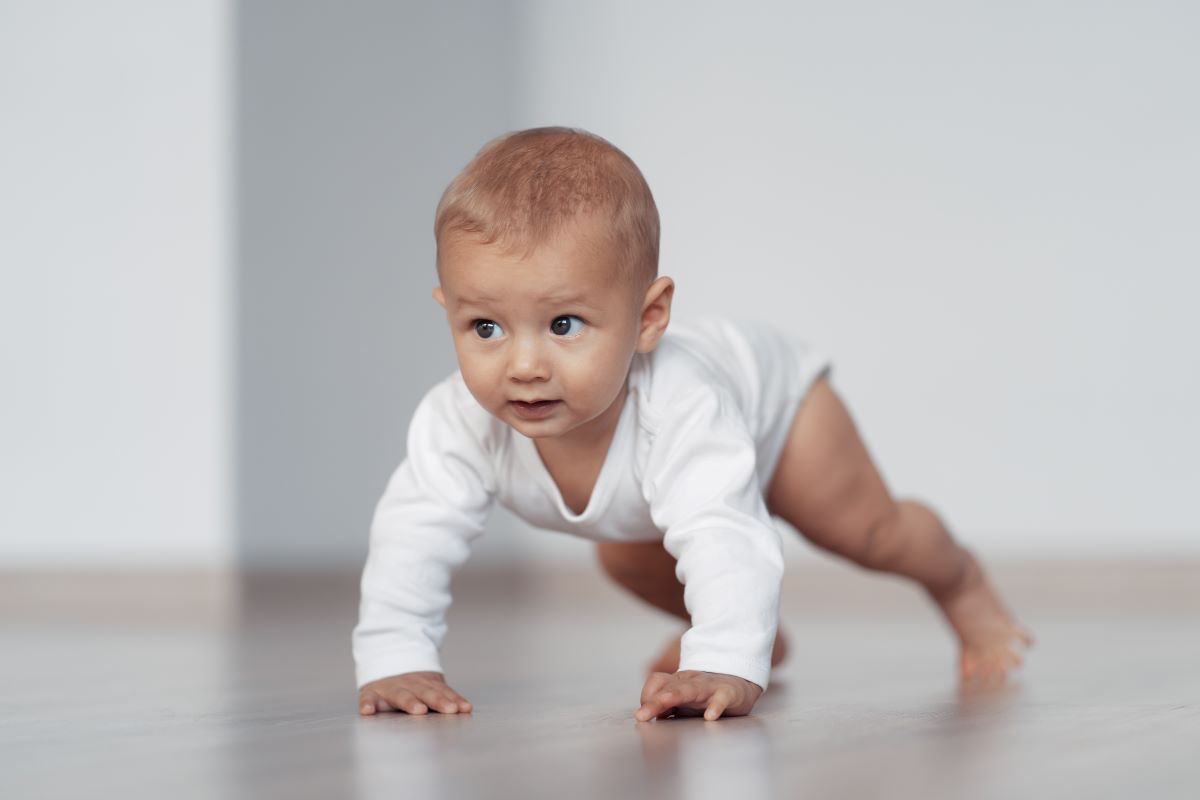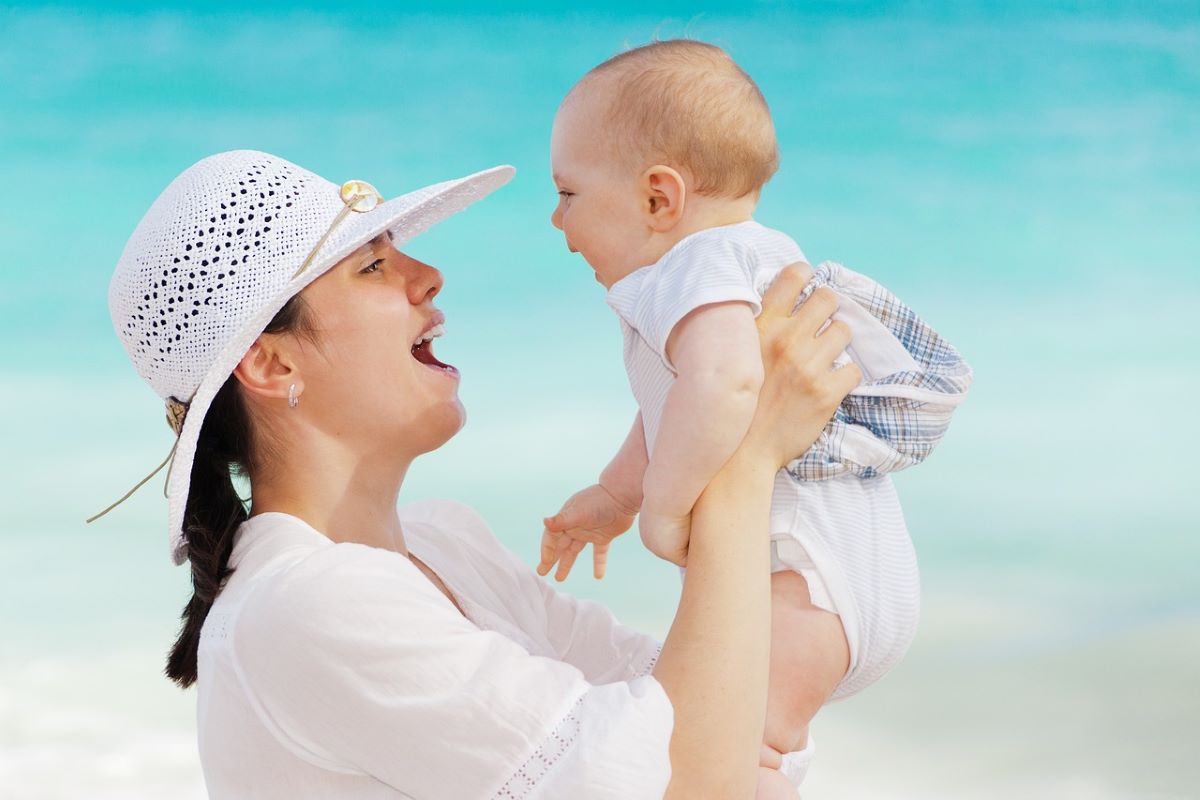Simplifying Life Insurance in India
11 Developmental Milestones of a 3 Month Old Baby

The third month of your baby's life promises even better improvement and new developmental changes. At this time, it is essential to assist your child with their emotional, intellectual, and physical development. Learn a few key aspects of three month old development, along with some tips on safely interacting with and caring for your infant.
Read on to find out how to make your baby flourish during this exciting stage and how to further promote their current development by monitoring the milestones for a three month old.

Table of Contents

What Most Babies Do by 3 Months?
Around three months, babies focus on surroundings and people and play with things with intention. Socially, the children smile when they see familiar faces, hear familiar sounds, and scratch and shake as if talking back in gurgles and coos. Communication is evident; babies begin to vocalise and move about, making different sounds and responding to voices.
In terms of physical abilities, babies can support their heads up at three months and may start to push up while on their front, thus engaging their neck and shoulder muscles. Since they are three months old, visually tracking moving items and responding to people and toys they know is demonstrated to them.
3 Month Milestones & Development Checklist
1. Movement Milestones for a 3 Month Old Baby

Movement Milestones for a 3 Month Old:
- Head Control: When upright and supported, the head can be held uniformly in an upright position together with neck gain during tummy time.
- Pushing Up: Employs arms to lift the head and chest during tummy time while elevating oneself on the forearms.
- Arm and Leg Movements: Waves legs and arms more vigorously, often hitting at toys or reaching for things in their surroundings.
- Grasping Objects: Begins to open hands more and hold objects, though the grip may still be reflexive as earlier.
- Kicking: Kicking the legs energetically while lying on the back. Helps babies use their legs to explore or get attention.
- Turning Head: They can now turn their head from side to side, particularly when one turns to these sounds or sights.
2. Visual and Hearing Milestones for a 3 Month Old Baby

Visual Milestones:
A three month old will not have perfect visual attention or focus. However, here are a few things to be expected:
- Tracking Objects: Able to follow the movement of objects or people either with their eyes or their heads, especially when they move slowly.
- Focus on Faces: Actively seeks human faces, especially that of a primary caregiver, and is likely to pay close attention to the caregiver’s face.
- Colour Perception: The child can identify some colours and hues and begins to respond to brightly coloured and highly contrasting objects.
- Hand-Eye Coordination: Starts reaching for and batting at objects, practising early hand-eye coordination.
Hearing Milestones:
The hearing milestones of a three month old baby can be determined by the following points below:
- Responding to Voices: Hears a familiar voice and turns their head towards it as if they know the person, e.g., a parent or a primary caregiver.
- Sound Localisation: Begins to make attempts to locate the point of origin of certain sounds, responding either by moving their head or eyes in that direction.
- Vocal Exploration: Makes cooing sounds and may start experimenting with new vocal tones and pitches.
- Reaction to Sudden Sounds: Startles or shows a response to unexpected loud noises, like a door slamming or a dog barking.
3. Smell and Touch Milestones for a 3 Month Old Baby

Smell Milestones:
Common smell milestones for a 3 month old are as follows:
- Recognising Familiar Scents: At this stage, babies can feel familiar smells such as their mother’s, breast milk, and caregivers’ clothing and may be calmed by it.
- Response to Pleasant Scents: Babies may show increased calmness or smiles in response to pleasant scents, like those from favourite foods or familiar environments.
- Distinguishing Unpleasant Scents: Infants can also react negatively to unpleasant smells by frowning or turning away, indicating their growing sensory awareness.
Touch Milestones:
Common touch milestones for a 3 month old are as follows:
- Exploring Through Touch: The child begins to feel with the hands, reaching out to touch the different textures, like soft toys or blankets.
- Soothing Through Touch: When gently stroked or held, they also tend to calm down and fall asleep, which indicates that stimuli from touch are not irritating.
- Developing Tactile Awareness: The child will start to bring and grasp and finger rather into their month, suggesting they explore their hands more.
4. Sleep Milestones for a 3 Month Old Baby

3 Month Old Baby Sleeping Patterns:
- Longer Night Sleep: Their sleep patterns change, with many babies starting to sleep for a stretch of 5-6 hours within a night, resting only for shorter feeding breaks.
- Shorter Daytime Naps: Most babies within this age bracket average between three to four naps during the day, ranging from thirty minutes to two hours.
- Establishing Sleep Routines: Caregivers can start establishing a bedtime routine as babies become more responsive to cues like dim lighting and gentle rocking.
- Increased Awareness During Waking Hours: They begin to be more active within the day and stay up longer as they learn to understand the night and day system.
5. Health and Growth Milestones for a 3 Month Old Baby

Below is a table with the ideal growth parameters for a 3 month old baby.
These values represent typical ranges, but individual variations can occur. Regular check-ups with a paediatrician will help ensure your baby is on track with their growth and health.
6. Feeding Milestones for a 3 Month Old Baby

Feeding Milestones for a 3 Month Old:
- Breast Milk or Formula: The infant remains on breastfeeding or formula exclusively for all nourishment and has about 720 to 960 ml daily in a few feeding sessions.
- Improved Feeding Patterns: Feeding sessions become easier to predict as babies start having fewer and lengthier feeding sessions.
- Hunger Cues: Shows more signs of hunger, such as sucking one's fingers, rooting, or fidgeting when hungry.
- Fullness Cues: Shows signs of fullness, such as turning away from the breast or bottle or slowing down sucking. They can sense hunger and fullness better now.
- Increased Sucking Efficiency: Sucking action becomes stronger and more coordinated, allowing babies to eat better during feeding.
7. Schedule and Routine Milestones for a 3 Month Old Baby

Here is a typical routine for a 3 month old:
8. Cognitive Milestones for a 3 Month Old Baby

Cognitive Milestones for a 3 Month Old:
- Increased Curiosity: Infants begin looking at the people and objects around them, increasing their interest and focusing on their surroundings.
- Tracking Moving Objects: They begin to track objects or people with their eyes as they move across their field of vision.
- Early Problem-Solving: They might try out simple action-reaction scenarios, such as hitting a toy to have it move.
- Recognising Familiar Faces: They can identify their parents or caregivers and usually react positively by smiling or cooing when such familiar faces are seen.
- Attention Span Growth: Displays ability to look at targeted objects and/or people for extended periods, though short in attention span.
9. Social Milestones for a 3 Month Old Baby

Social Milestones for a 3 Month Old:
- Social Smiles: Babies smile in response to social interaction, especially when seeing familiar faces.
- Vocal Interaction: Directed cooing or making some simple sounds to gain caregivers’ attention, indicating readiness for a social interaction.
- Preference for People: They show emotion and prefer familiar faces over strangers. They can respond excitingly when known faces are brought closer.
- Mimicking Facial Expressions: Mimicking simple facial expressions like smiling or sticking out their tongue.
10. Communication Milestones for a 3 Month Old Baby

What to Expect:
- Cooing Sounds: The child starts to coo using vowel sounds such as ‘ooh’ and ‘aah,’ leading to babbling later.
- Responding to Speech: Infants tend to reciprocate by smiling or cooing when addressed; this illustrates an intention to communicate.
- Early Vocal Play: The infant begins to ‘play’ with their voices in terms of pitch, volume, and tone, even though they do not say any specific words yet.
11. Fine Motor Milestones for a 3 Month Old Baby

Fine Motor Milestones for a 3 Month Old:
- Grasping Reflex: The infants are still in the stage of strong grasp reflex and may grab onto toys or fingers briefly.
- Hand Exploration: They begin to put their hands in their mouths and look at their hands, which is the start of hand-eye coordination.
- Swatting at Objects: As infants develop, they also begin to swat or bat purposefully at objects above them instead of just reaching their hands.
- Opening and Closing Hands: Babies start practising moving their hands and soon afterwards begin to open and close their hands.
Different Engaging Activities for a 3 Month Old Baby

1. Tummy Time
During this period, you should encourage your infant to spend time on the tummy to help get more strength into the neck, shoulders, and arms muscles. They may start to raise their heads, which increases the strength of the core and prepares further milestones.2. Face-to-Face Play
While lying your infant flat on the back, you can play with them by looking at their eyes, making smiles for smiles, and conversing with them. This activity provides the child with activities that promote sociability and emotional bonding and improve verbal development.3. Grasp and Reach
Create some tethered toys to stretch your baby's grabbing muscles. Infants of this age are in the process of learning to move their hands and fingers. Thus, a forward-reaching movement for soft-coloured toys enhances the development of fine movements and eye-to-hand coordination.4. Mirror Play
Recline your baby either sitting up or lying in front of a mirror. Infants love playing with mirrors, which has helped in brain development and understanding of self as intact images and the movements within become apparent.5. Gentle Music and Sounds
You can play gentle music or sounds emerging from one or a series of quiet " lullabies" and even nature sounds. The music also helps develop the sense of hearing because of the beat and tune, which is most often pleasing and nourishing.6. Sensory Play
Give your baby soft or textured items or smooth and wrinkled paper, and let them experience these with their hands. This activity helps stimulate his or her sense of touch, developing curiosity and sensory awareness.7. Bicycle Legs
Move your baby's legs in a pedalling motion while your baby is lying supine. This is an enjoyable activity that is effective in building up leg muscles. It also helps in developing coordination, and at the same time, it's fun.8. Tracking Objects
Take a toy that is an attractive colour and wave it slowly in front of the baby from side to side. This encourages the babies to move their eyes to follow the objects, thus enhancing visual tracking and focus.9. Sing-Along
Nursery rhymes or songs that are well-known combined with some motions should be sung to children. Repeated singing of nursery songs and action improves auditory development, whereas such interaction enhances attachment and socialisation.10. Supported Sitting
While holding your baby securely, assist the infant in an upright position for brief periods. This activity develops their neck and back muscles and readies them for more advanced developmental tasks, such as being able to sit independently.What are the Safety Tips for a 3 Month Old Baby?
By the third month, your baby is getting active, and safety is still critical. Here are basic safety measures to follow to ensure their safety:
Savings & Protection Options for Your Child
How to Support a Baby's Development at 3 Months?
1. Provide Visual Stimulation
Provide brightly coloured toys and objects to encourage the baby’s visual tracking development. High-contrast patterns are also good for promoting focus and visual development. New and novel sights keep people interested.2. Engage in Conversation
Talking constantly to your baby, reading stories, and singing simple songs will help promote language skills early. It also enhances the bond between the caregiver and the baby, thus making the baby feel emotionally safe.3. Introduce Grasping Opportunities
Provide soft toys or textured objects that your baby can safely grasp. This helps improve hand-eye coordination and fine motor skills as they start learning about the environment around them through touch.4. Promote Social Interaction
Smile, coo, and make eye contact with your baby to enhance their social development. Their responses to some of the sounds made by the mother encourage communicative attachment even at that instance.When to Talk to the Paediatrician?
At 3 months old, It’s important to keep monitoring the child's developmental milestones and well-being at this stage. If issues arise, such as key milestones not being met by the baby, they should seek the attention of their paediatrician.
- If your baby doesn't smile at people, makes no sounds, watches moving objects with their eyes, or does not respond to loud noises, meet the paediatrician.
- If your baby loses previous skills, like holding their head up and responding to familiar voices, it’s essential to talk to your doctor.
- A consultation is necessary if there is a problem breastfeeding your baby, they are not gaining weight appropriately, or they appear less active.
- If there are sleeping disturbances, e.g., inability to sleep or sleeping at odd hours of the day, a paediatrician can advise how to deal with forming sleeping habits.
FAQs about 3 Month Developmental Milestones
What are the key developmental milestones for a 3 month old?
When should my 3 month old baby start rolling over?
How can I encourage my 3 month old baby to hold their head up?
How can I support my 3 month old baby's visual development?
What are common sleep patterns for a 3 month old?
When should my 3 month old baby start making cooing sounds?
What kind of tummy time is appropriate for a 3 month old?
How can I help my 3 month old baby develop better hand coordination?
When should I start introducing toys to my 3 month old baby?
What are some signs that my 3 month old baby might need a check-up?
How can I bond with my 3 month old baby at this stage?
What should I expect of my 3 month old in social development?
How do I know that my 3 month old is developing normally in terms of hearing?
By what age will my 3 month old start having preferences for people?
What are some good positions to hold my baby safely at 3 months?
How can I encourage language development in my 3 month old?
Important Articles about Infant Developmental Milestones
Latest News
Read More
















